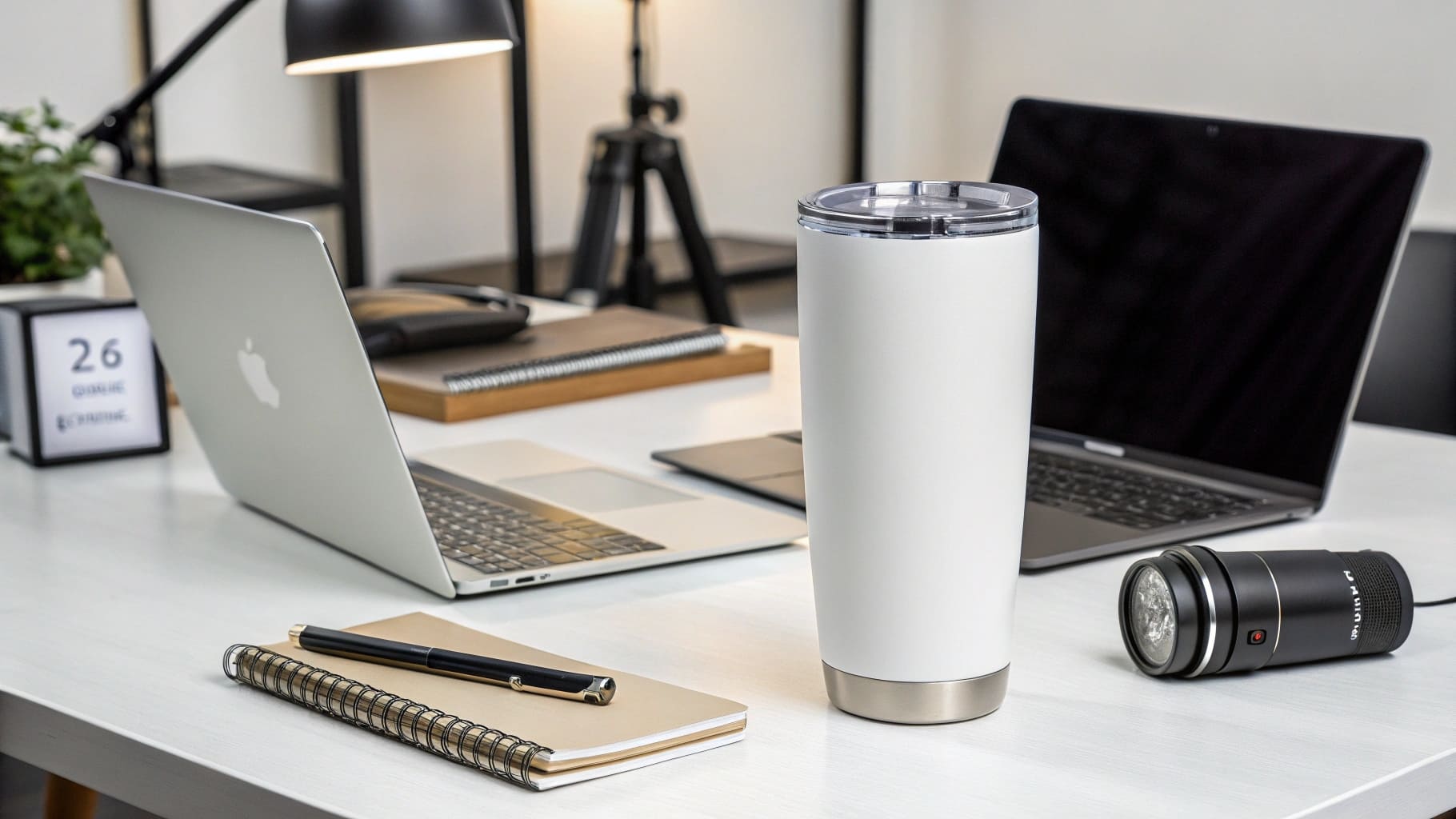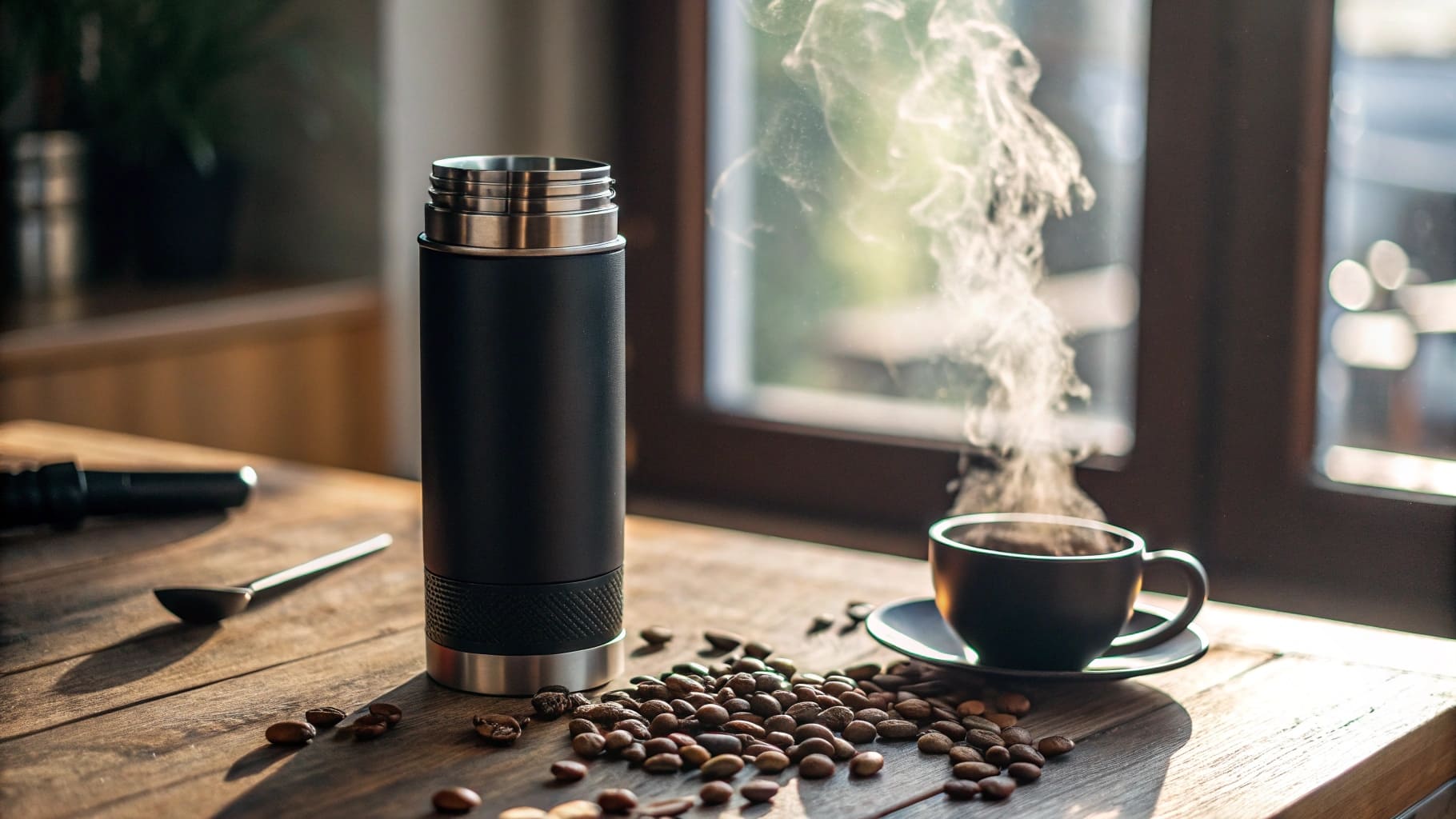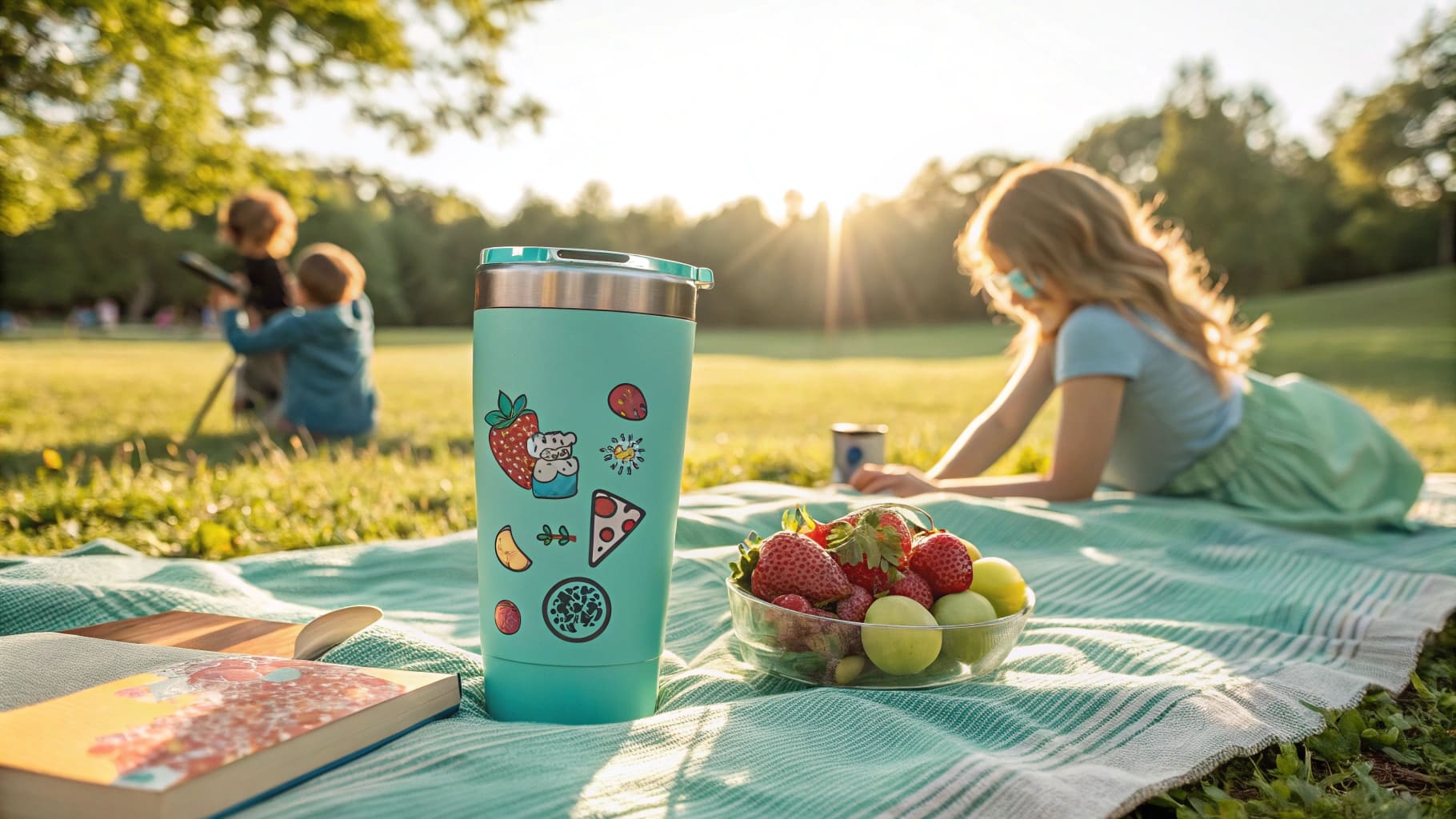Choosing a supplier feels overwhelming. Make the wrong move, and you're stuck with quality issues and unhappy customers. A great partner helps you answer customer questions before they're even asked.
To choose the right supplier, focus on their transparency. A good partner will proactively provide certifications for food-grade materials like 304 stainless steel and BPA-free lids. This proves their commitment to quality and safety, building confidence with you and your end customers.

Picking a supplier is much more than comparing prices on a sheet. It's about finding a partner who understands what your final customer truly values: safety, health, and durability. Your supplier's ability to deliver on these points directly impacts your brand's reputation and success. Let's explore the common questions your customers have, and how the right supplier choice provides the perfect answers.
Is it Safe to Drink Out of Stainless Steel Mugs?
Your customers worry about product safety. This hesitation can stop a sale in its tracks. A great supplier gives you the proof you need to build trust instantly.
Yes, drinking from a stainless steel mug is extremely safe, as long as it’s made from food-grade stainless steel1 like 18/8 (also known as 304). This material is non-toxic and doesn't leach chemicals. Always confirm your supplier uses certified materials for the mug and the lid.

When I talk with buyers like Mark, who sells to a health-conscious market in Canada, safety is our first conversation. He knows his customers will ask questions, so he needs solid answers. The key is to look for a supplier who doesn't just say their products are safe, but proves it.
Understanding Stainless Steel Grades
The most common material is 304 stainless steel. It’s the standard for kitchen equipment and drinkware for a reason. It offers a fantastic balance of corrosion resistance and cost-effectiveness. Sometimes you'll see 316 stainless steel, which offers even higher corrosion resistance, making it ideal for marine environments or highly acidic contents. For coffee mugs, 304 is more than sufficient. A good supplier will be transparent about the grade they use and provide reports like FDA or LFGB certification2 to back it up.
| Feature | 304 Stainless Steel | 316 Stainless Steel |
|---|---|---|
| Composition | 18% chromium, 8% nickel | 16% chromium, 10% nickel, 2% molybdenum |
| Corrosion Resistance | Excellent | Superior |
| Common Use | Drinkware, kitchen utensils | Medical devices, marine hardware |
| Cost | More affordable | More expensive |
This documentation is your shield. It protects your business and assures your customers they are buying a safe, high-quality product.
What is the Healthiest Material for Coffee Mugs?
Health-savvy customers compare everything. If they believe another material is a healthier option, you could lose the sale. You need to know why stainless steel is a top choice.
Food-grade stainless steel is one of the healthiest options available. Its surface is non-porous, which means it resists bacteria, stains, and lingering odors. Unlike some plastics, it is completely free from BPA and other potentially harmful chemicals. It's a clean and safe choice for daily use.

When we think about health, we have to think beyond just the material itself. We also have to consider hygiene and durability. A chipped ceramic mug can harbor bacteria in its cracks. A plastic mug can degrade over time and leach chemicals. Stainless steel avoids these issues.
Material Health and Hygiene Comparison
I always explain to my clients that stainless steel’s main advantage is its inert and non-porous nature. This means it won't react with your coffee, which is acidic, and it won't absorb flavors or bacteria from past drinks. Cleaning is simple, and its durability means you don't have to worry about hidden cracks where germs can grow. A quality-focused supplier ensures the interior of the mug is seamless and polished, further enhancing its hygienic properties. This is a powerful selling point that builds long-term customer trust.
| Material | Non-Porous | Chemical Leaching (BPA) | Durability (Hygiene Risk) |
|---|---|---|---|
| Stainless Steel | Yes | No | High (No cracks) |
| Ceramic | Glazed surface is, but can chip | No | Low (Chips/cracks can harbor bacteria) |
| Glass | Yes | No | Medium (Can break or chip) |
| Plastic | Can be porous over time | Possible (if not BPA-free) | Low (Scratches can harbor bacteria) |
Is a Ceramic Mug Better Than Stainless Steel?
Ceramic mugs feel traditional and cozy. This perception can make stainless steel seem purely functional, pushing customers away. The key is to focus on the practical benefits where steel excels.
It really depends on your needs. Ceramic is great for a classic feel at home but it’s fragile and loses heat quickly. Stainless steel is far more durable, portable, and keeps drinks hot or cold for hours, making it the clear winner for an active lifestyle.

I've worked with many brand owners who initially sourced ceramic mugs. They often came to me after dealing with complaints about breakage during shipping and customers who were disappointed that their coffee went cold on their commute. This is where the conversation about stainless steel begins. It solves these exact problems. The choice becomes clear when you compare them side-by-side based on what a modern consumer needs.
Head-to-Head: Stainless Steel vs. Ceramic
The biggest technical advantage of a stainless steel mug is its vacuum insulation. This technology creates an airless space between two walls of steel, which dramatically reduces heat transfer. Your hot coffee stays hot, and your iced tea stays cold. Ceramic has no such feature. While some people prefer the heft and feel of ceramic, a well-designed stainless steel mug can also offer a great user experience, with the added benefits of being nearly indestructible and travel-friendly.
| Attribute | Stainless Steel | Ceramic |
|---|---|---|
| Durability | Virtually unbreakable | Fragile, chips easily |
| Heat Retention | Excellent (hours) | Poor (minutes) |
| Portability | Excellent (lightweight, leak-proof lids) | Poor (heavy, no lid) |
| Flavor Neutrality | Excellent | Excellent |
| Customization | Wide range of colors and logo options | Traditional look, some printing |
How Often Should I Replace My Stainless Steel Tumbler?
Your customers might wonder about the product's lifespan. They may assume it's like a plastic bottle that needs frequent replacement. You can reassure them by highlighting its long-term value.
With proper care, a high-quality stainless steel tumbler can last for many years, even a lifetime. You only need to replace it if the vacuum seal3 fails (it no longer insulates) or if it sustains major physical damage, like a large dent or a broken lid.

The incredible durability of stainless steel is one of its core selling points. It’s an investment in a product that won't need to be replaced season after season. But this is only true if the mug is well-made. This is why choosing a supplier who focuses on quality construction is so critical. A cheap, poorly made tumbler might lose its insulating properties after a few drops or washes.
Signs It's Time for a Replacement
A quality supplier uses strong welding techniques and robust materials to ensure the vacuum seal holds for years. They also provide durable lids and gaskets4 that won't fail. When your customers buy from you, they are buying a product they expect to last. Here’s what tells them it might be time for a new one:
- Loses Insulation: The outside of the tumbler gets hot when filled with a hot liquid. This means the vacuum seal is broken and it's just a plain steel cup now.
- Visible Rust: Rust spots indicate low-grade stainless steel or a deep scratch that has compromised the material.
- Major Dents: A large dent, especially near the top or bottom, can make the tumbler unstable or prevent the lid from sealing correctly.
- Leaky Lid: If the silicone gaskets on the lid are worn out, torn, or warped, it will leak. Sometimes you can just replace the lid.
A supplier that delivers on durability helps you build a reputation for reliability.
Why Are Stainless Steel Mugs Not Dishwasher Safe?
The "hand wash only" instruction sounds inconvenient. For customers who value ultimate convenience, this can be a reason not to buy. Explaining the "why" behind this recommendation is key.
It isn't about the steel itself, but the exterior finish and the vacuum seal. The dishwasher's high heat and strong detergents can damage the colorful powder coating or paint, and can even break the vacuum seal that provides all the insulation. Hand washing preserves the mug's look and function.

I get this question all the time from procurement managers like Mark. He knows this is a practical concern for his customers in Canada. My answer is always one of honest transparency. It is better to set clear expectations for product care than to deal with a customer complaint about a custom logo peeling off after a few wash cycles. The mug's longevity is tied to its care.
What the Dishwasher Actually Affects
Some suppliers might claim their mugs are "dishwasher safe5" to make a quick sale, but this often comes at a cost to the product's lifespan. A truly reliable partner will give you accurate care instructions that protect the product's integrity. This honesty builds trust. The steel body can handle a dishwasher, but the mug is more than just steel.
| Component | Dishwasher Risk |
|---|---|
| Vacuum Seal | High heat can cause the air between the walls to expand, potentially breaking the seal and ruining the insulation. |
| Exterior Coating | Harsh detergents and high temperatures can cause powder coating or paint to chip, peel, or fade. |
| Lid (Plastic/Silicone) | High heat can warp the plastic or damage the silicone gaskets over time, leading to a poor seal and leaks. |
| Stainless Steel Body | Generally fine, but can sometimes become discolored from harsh detergents. |
By explaining this, you show that "hand wash only" is a mark of a high-performance, quality product, not a flaw.
Conclusion
Choosing the right supplier means finding a partner who answers your customers' questions with quality, transparency, and honesty. This is how you build a brand that people trust.
-
Understanding food-grade stainless steel is crucial for ensuring safety in drinkware. Explore this link to learn more about its benefits and standards. ↩
-
Learn about FDA and LFGB certifications to understand how they ensure product safety and quality in food-related items. ↩
-
Learn about the importance of vacuum seals in tumblers and how they affect insulation and durability. ↩
-
Discover the best materials for tumbler lids and gaskets to ensure long-lasting performance and prevent leaks. ↩
-
Explore the truth behind 'dishwasher safe' claims and what it means for the lifespan of your stainless steel mug. ↩

